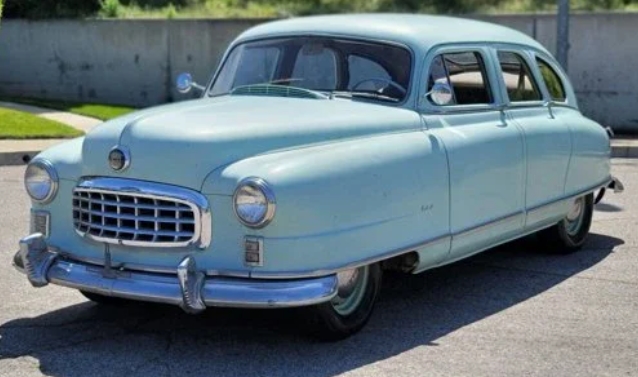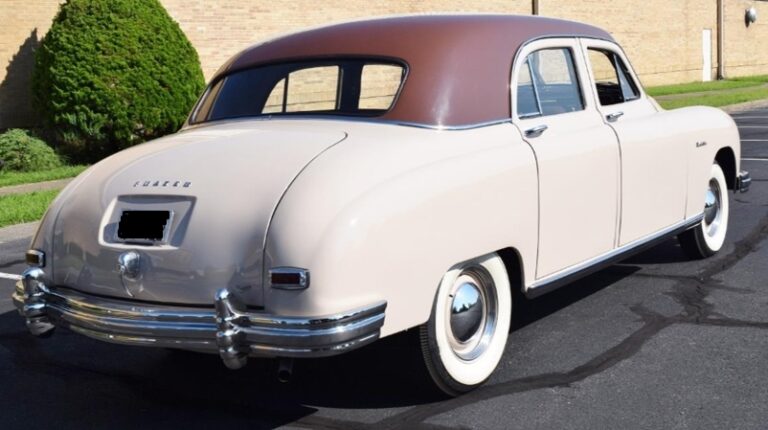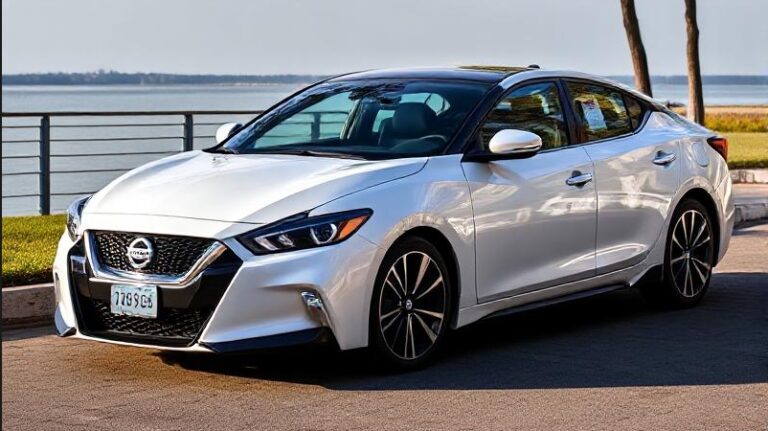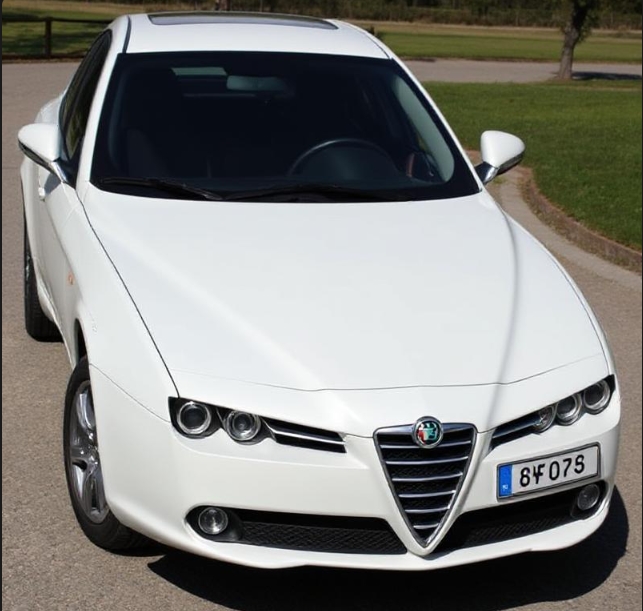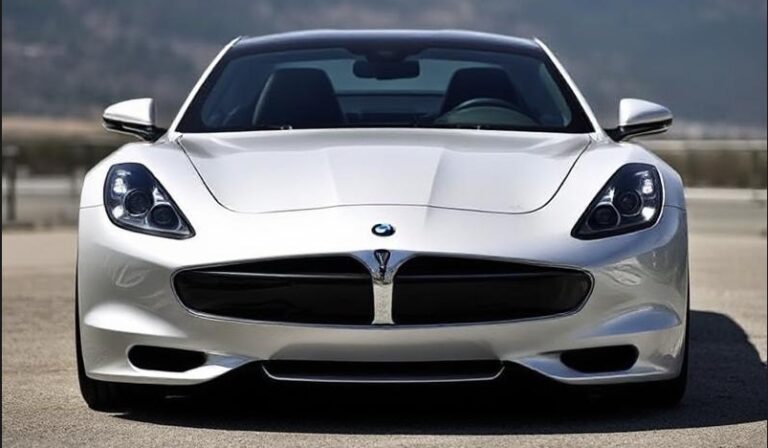The Evolution of the Nash Airflyte 600: A Classic in American Motoring
The Nash Airflyte 600 traces its origins to the 1940s, an era marked by post-war optimism and burgeoning automotive innovation in the United States. This car, part of the Nash Motors lineup, symbolizes not just a mode of transport but a slice of American history intertwined with innovation, aesthetics, and societal changes in the automotive landscape.
Historical Context: The Birth of the Nash Airflyte
Nash Motors, founded in 1916, was a pioneer in many automotive innovations. By the time World War II concluded, the automotive industry was re-emerging, with manufacturers eager to capture consumer interest with new designs and technology. In 1949, Nash introduced the Airflyte, a striking model characterized by its aerodynamic design.
The 600 designation referred to the car’s 600 cubic-inch trunk capacity and the Nash Airflyte line began production in 1949 and lasted until 1957, capturing a significant period in both the automotive industry and American culture.
Key Production Years and Evolution
1949-1950: The Introduction
The Nash Airflyte 600 debuted in 1949, showcasing its unique aerodynamic styling that reflected the principles of streamlining. The model was designed by famed industrial designer and vice-president of Nash, George Mason. One of the standout elements of this model was its rounded fuselage, which was meant to reduce drag, thereby improving fuel efficiency.
During this inaugural year, the Airflyte 600 was available in several trim options, including the standard model and more luxurious models like the Super and Ambassador variants. The initial Airflyte lineup featured a flathead inline-six engine producing 95 horsepower, marking a significant shift towards modernization in the automotive industry.
1951: The First Facelift
By 1951, Nash continued to refine the Airflyte 600, introducing a few cosmetic changes for the model year. Perhaps the most notable update was the introduction of a new, more powerful 6-cylinder engine that increased output to 108 hp. This year’s models included the standard Airflyte, the Super Airflyte, and the higher-end Custom Airflyte trim.
This year also marked the introduction of Nash’s innovative “Comfort Control” system, which offered enhanced suspension characteristics, a feature worth mentioning given the rising consumer demand for comfort during long-distance travel.
1952: Expanding the Lineup
In 1952, the Nash Airflyte’s lineup was expanded further with the introduction of the “400” series which encompassed the 400 coupe and 400 sedan – a more compact option in contrast to the larger models. However, it was the 600 that remained popular, appreciated for its balance of size and comfort.
The air intake and grille designs were subtly updated, providing a more aggressive look while retaining the aerodynamic principles Nash had pioneered. The engine options expanded to include a 3-speed manual transmission or a new automatic option, catering to a broader audience.
1953: Pushing Boundaries
In 1953, Nash introduced the first significant redesign of the Airflyte. Highlights included a complete overhaul of the rear end, where the car sported a more pronounced tail, mirroring the automotive design trends of the time. The 1953 model year saw the reintroduction of the “Super” and “Custom” trims, now offering advanced features such as power windows and improved upholstery choices.
1954-1955: Continued Refinements and Upscale Features
The Nash Airflyte 600 remained largely unchanged in 1954 and 1955, focusing on refined comfort features rather than drastic redesigns. Options such as power steering became available, and consumers enjoyed the ease of handling, marking a significant leap in the driving experience.
These years saw an increase in competition from other manufacturers. Dodge and Chevrolet were heavily marketing their models, prompting Nash to enhance its marketing strategies. The introduction of color options, including vibrant greens and ambers, allowed customers to customize their vehicles further – a concept less common in the earlier models.
1956: The Final Years of Production
By the mid-1950s, consumer preferences began shifting rapidly, and Nash sought to keep pace. The 1956 model year brought a notable departure from the previous designs. The Airflyte’s signature rounded shapes gave way to more angular designs.
While the Nash Airflyte 600 effectively carved a niche for itself throughout its production years, it was facing fierce competition in the burgeoning American automobile market, with consumers becoming increasingly enamored with the growing emphasis on speed, style, and horsepower.
1957: The End of an Era
By 1957, the age of the Nash Airflyte 600 came to a close. Changes in company leadership and increased competition affirmed that a transformation was necessary. Nash merged with Hudson Motor Car Company to form American Motors Corporation (AMC). Consequently, the Airflyte was discontinued, making way for newer models that better reflected the aesthetic and performance demands of the time.
Despite its discontinuation, the Nash Airflyte 600 left an indelible mark on the automotive world. Its unique aerodynamic design and commitment to comfort represented an era when style and innovation were paramount to the American spirit.
.
How many of these auto shops have you dealt with? Legendary Hot Rod Companies
.
Models and Trim Levels
Throughout its production span, the Nash Airflyte 600 offered several models and trim levels. Here’s a summary of prominent variants:
- 1949-1950: Standard, Super, and Ambassador Trim Levels
- 1951: Standard, Super, and Custom with improved engine performance
- 1952: Expansion to 400 series with Standard, Super, and Custom
- 1953: Revamped Standard, Super, and Custom trims; introduction of luxury options
- 1954-1955: Continued Super and Custom trims with enhancements in comfort and design
- 1956: A renewed appearance with Standard, Super, and Custom, blending the old style with new aesthetics
- 1957: Discontinuation of the Airflyte, concluding its production
Conclusion
The Nash Airflyte 600 reflects a pivotal moment in American automotive history, showcasing the drive for innovation, comfort, and style. Over nearly a decade, the Airflyte transformed from a unique aerodynamic dream into an iconic part of the Nash legacy. Despite its eventual discontinuation, the Nash Airflyte 600 remains a revered icon among classic car enthusiasts today, representing a time when American cars were not just vehicles, but an expression of culture and identity. Its journey from debut to discontinuation highlights both the evolution of automotive design and the shifting preferences of consumers during a dynamic era.
